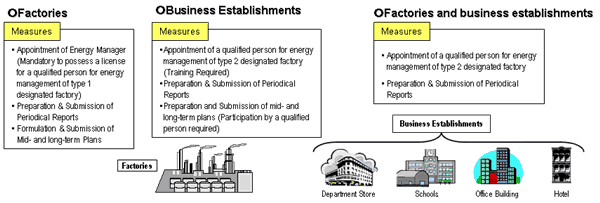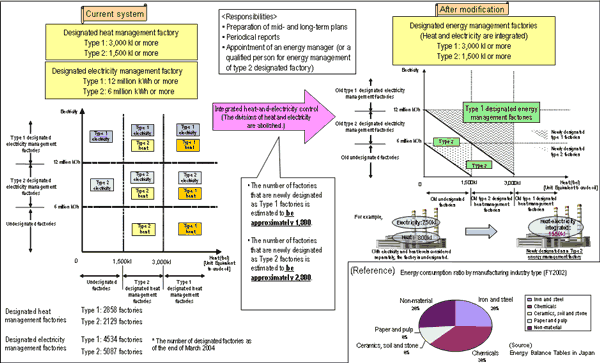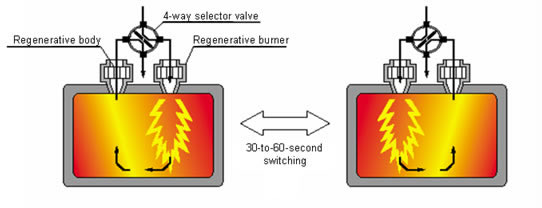II-2. Energy Conservation Measures for the Industrial Sector
Factory/Business Establishment Measures Under the Energy Conservation Law (1)
- Plan-based and voluntary energy control at relevant factories and business establishments shall be thoroughly and strictly managed in accordance with the Energy Conservation Law. Those factories and business establishments shall submit periodical reports on the use of energy, prepare and submit mid- andlong-term plans for measures to achieve energy conservation targets, and appoint energy managers in accordance with the law.
| Factories/business establishments with high energy consumption (Type 1 Designated Energy Management Factories) |
Factories/business establishments with medium energy consumption} (Type 2 Designated Energy Management Factories) |
|
|



